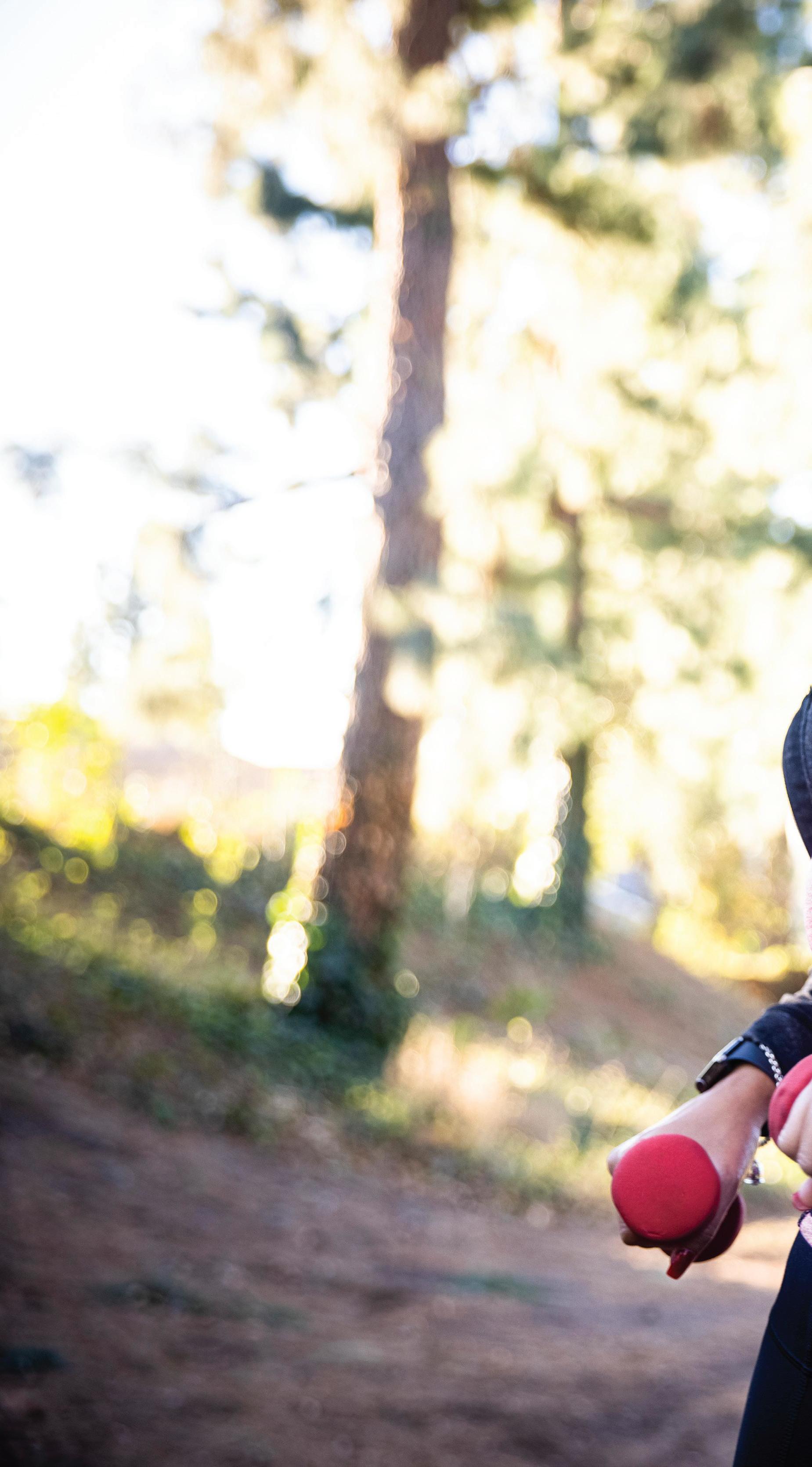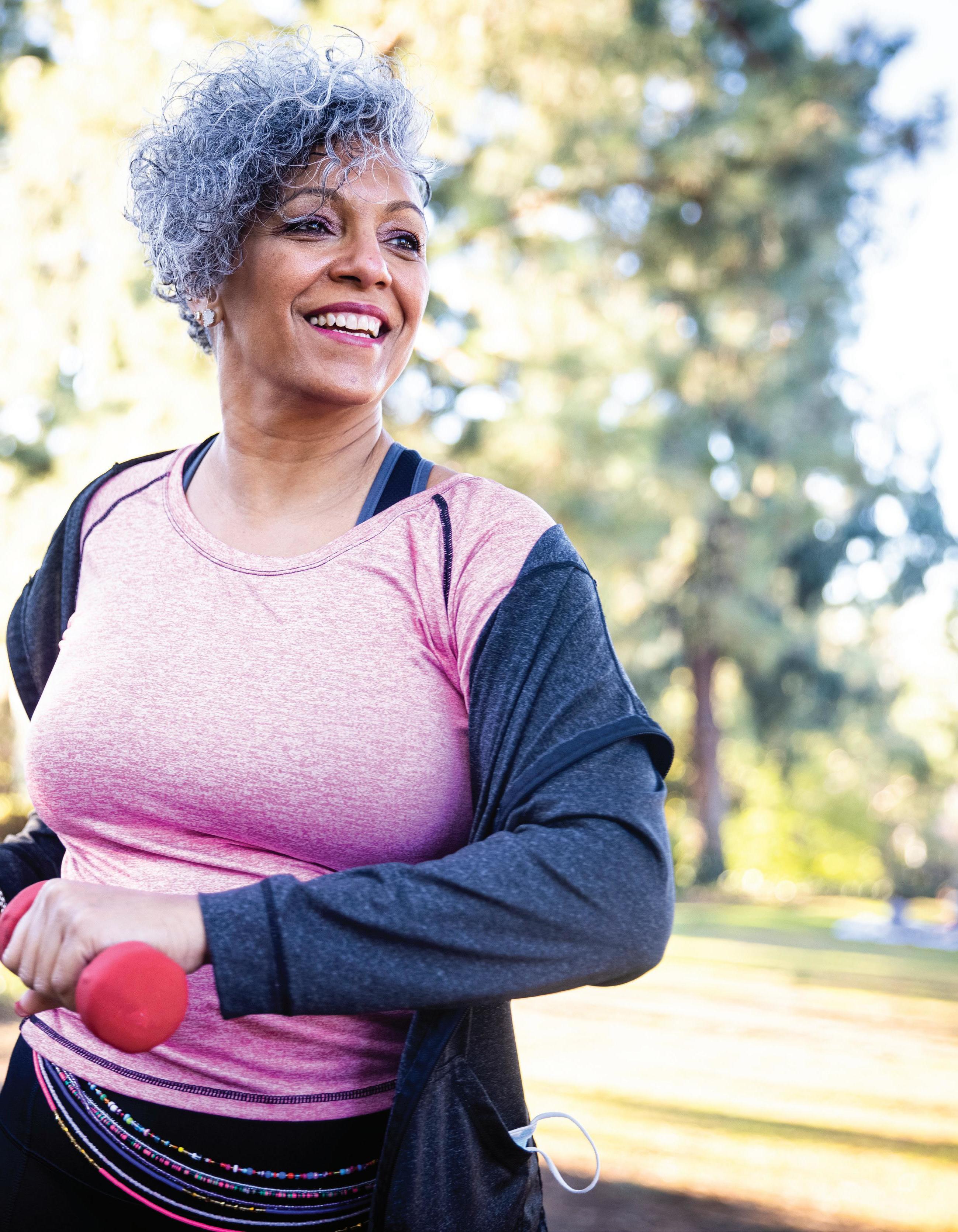
2 minute read
TAKE CHARGE OF INCONTINENCE
YOU DON’T HAVE TO LIVE WITH LEAKING URINE, A COMMON PROBLEM FOR WOMEN.
LET’S BE HONEST. Leaking urine can spoil a lot of moments, from a heartfelt laugh to a personal-best athletic feat. Nearly 1 in 2 women over the age of 50 report at least some urinary incontinence. The good news: It usually doesn’t indicate a serious disease, and excellent treatment options are available.
TWO CAUSES
There are two primary types of urinary incontinence: stress incontinence and urge incontinence. “Stress incontinence is when movement, such as coughing, jogging, sneezing or laughing, puts pressure on the bladder and causes leaking,” says Alexander Berry, MD, of Holyoke Medical Center Urology Services. This condition is often brought on by pregnancy or childbirth, which can damage the muscles that control urination.
In urge incontinence, leaking happens when you have a strong, sudden need to urinate. “Abnormal bladder contractions caused by incorrect signals from the brain can force urine out of the body,” explains Dr. Berry. “The cause of urge incontinence often cannot be identified, but it can occur with conditions such as diabetes, stroke, multiple sclerosis and Parkinson’s disease.”
Alexander Berry, MD TREATMENT OPTIONS
Several treatment alternatives exist for urinary incontinence, depending on its cause. The first step is to see your doctor. He or she will take a medical history and may perform a physical examination and order diagnostic tests, such as urine cultures and blood tests.
For stress incontinence, treatments include behavioral and lifestyle changes and Kegel exercises to strengthen the pelvic floor.
“There are lifestyle changes that can help, too,” says Dr. Berry. “For example, limit fluids before bedtime and cut back on caffeinated beverages, which can make incontinence worse. Excess weight also can play a role, so exercise and a healthy diet are important.”
Medical devices, such as a urethral insert or pessary, can help to physically block urine leakage. Surgery may be an option, although it’s generally seen as a last resort.
Treating urge incontinence is slightly different. A technique called urgency suppression can help you manage the need to urinate by training your bladder to maintain control. Biofeedback can help you learn to recognize when your bladder is overactive.
In addition, medications are available to relax the bladder. Botox, the drug used to decrease facial wrinkles, can be injected into the bladder to relax the muscle, resulting in a decrease in incontinence.
“The important thing to remember is that urinary incontinence is not something you have to live with,” says Dr. Berry. “Your doctor can help you find the right treatment option to fit your specific situation and lifestyle.”
✱The HMC Urology Center is located at 10 Hospital Drive,
Suite 204, Holyoke. To schedule an appointment, please call 413.533.3912.
6 LIFESTYLE CHANGES THAT CAN HELP
1. Maintain a healthy
weight. Exercise and choose healthy foods to avoid or reduce excess weight, which can contribute to incontinence.
2. Quit smoking. Smoking can cause coughing, which can make leaking worse.
3. Perform pelvic floor exercises,
such as Kegels, to strengthen the muscles that support the bladder.
4. Limit your intake of beverages containing alcohol and caffeine.
5. Avoid lifting heavy things.
6. Don’t drink a lot of
fluids before you exercise or go to bed.







